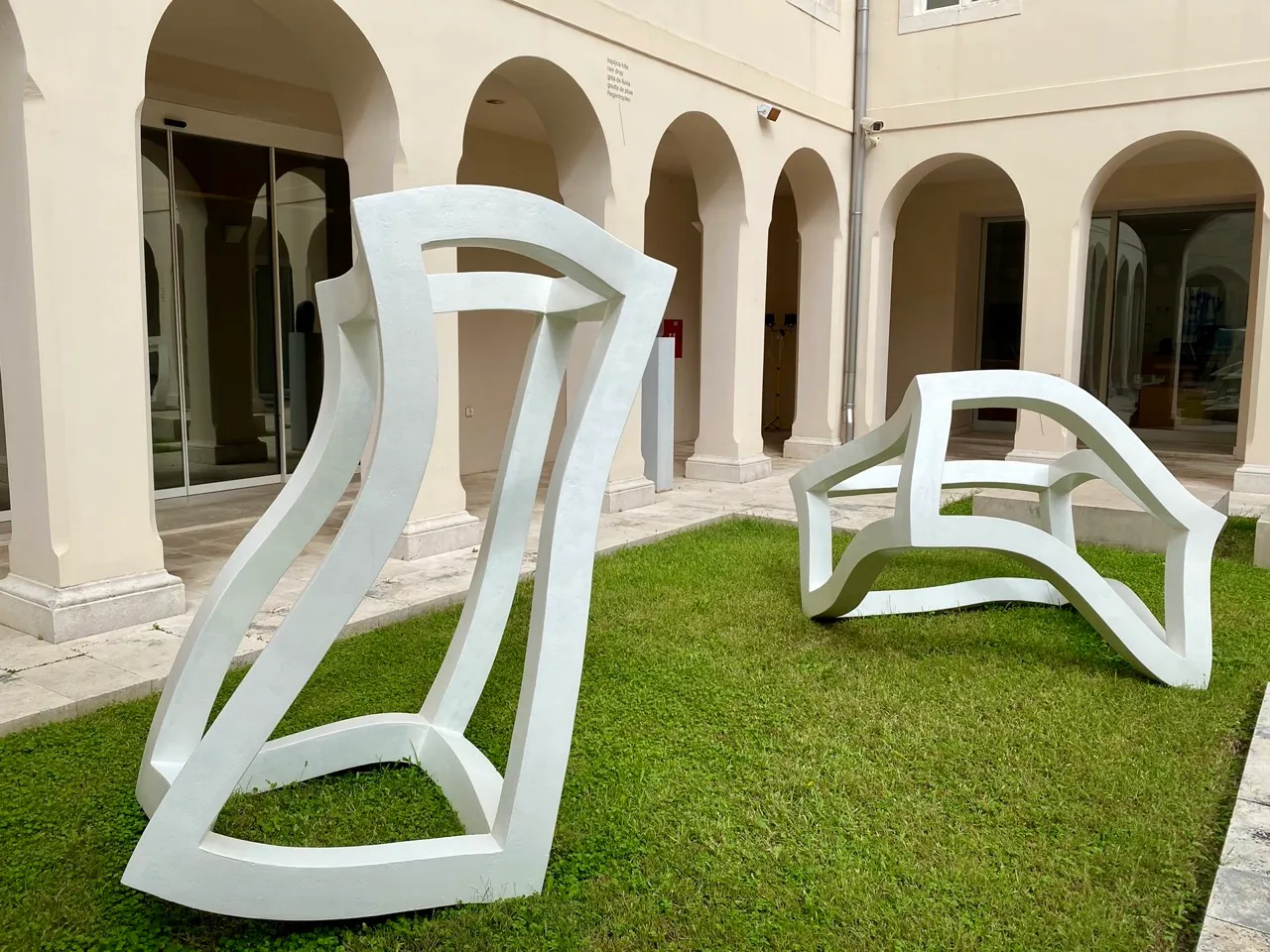
Hello Hive Community and Art Lovers!
My heart is jumping just like these corpses by Alem Korut in the courtyard of the Museum of Fine Arts in Split when I browse my photo gallery of the last two weeks.
The dynamic of these sculptures continues even in this two-dimensional blog post. This is what art can do, create feelings, stimulate your intuition and help you view the world with new eyes. I paid two visits to the museum, one on the day before #hivefest started. I was looking for inspiring images to add to my slides for my talk about the #makdao, a Dao for a specific museum in Vienna, the Museum of Applied Arts. The second visit was to take some better shots of the "Corpus" work of Alem Korut and to touch the sculpture. A bit nerdy, I know, but I missed that at my first visit and I wanted to know.
At first they reminded me of the paper sculptures we used to build at school, where you took strips of stiff white paper, folded it lengthwise and then started to build some wild architecture. Then I imagined they would be made of steel and forged into these fluid beams.
Close your eyes and reach out, tap gently on the surface. Can you feel it?
I'll leave you with your thoughts and feelings. Let's enter the museum!
To the right there is a huge drawing on the wall which @steevc describes in his post. To the left however there is another #sculpture.
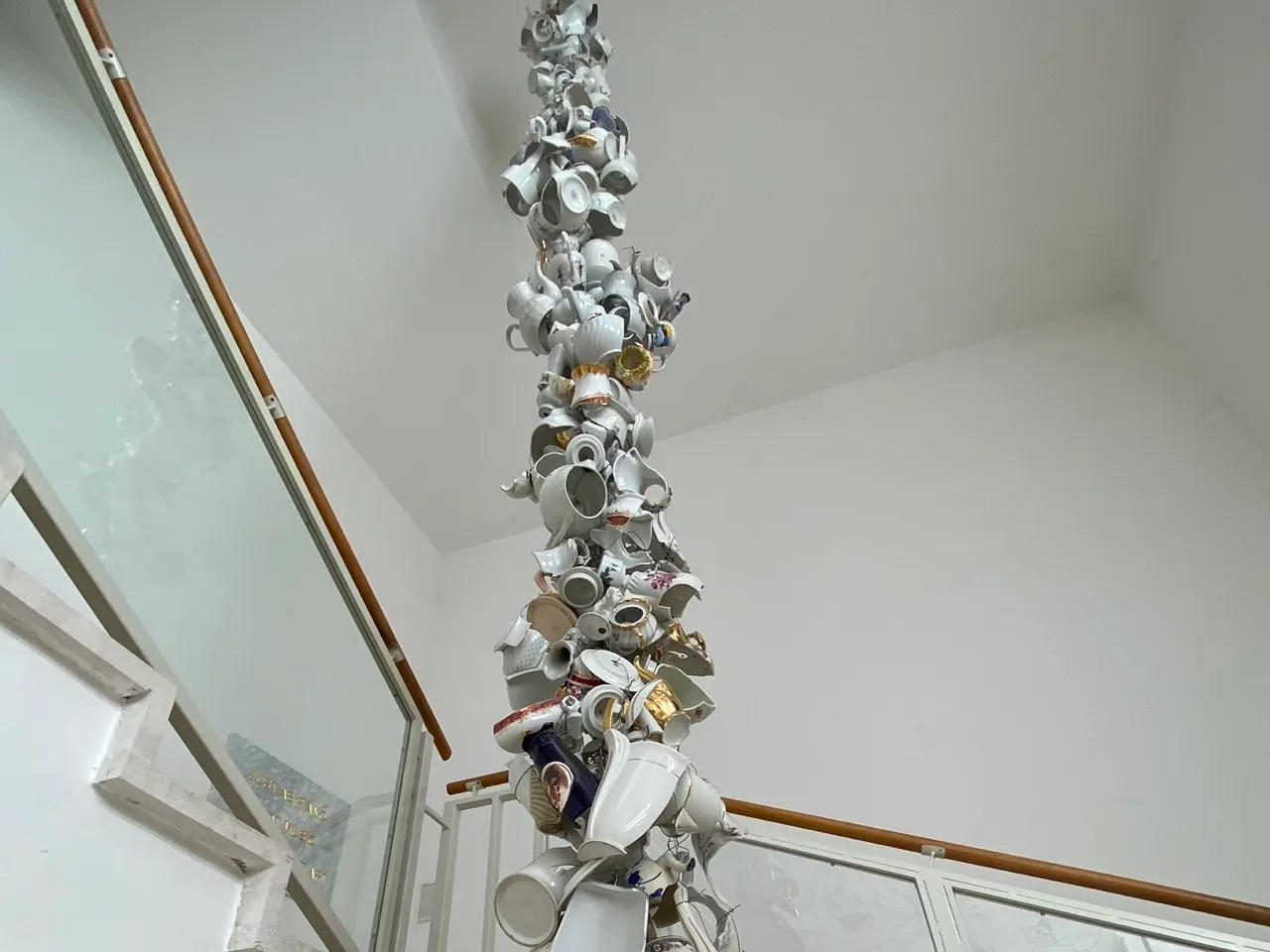
Hundreds of jugs, carefully sliced into pieces, forming a column, pottery of all styles piled up into the air. This sculpture by Momčilo Golub took my breath. It tells the story of destruction and resurrection. The sculpture is made of cheap China that is carefully destroyed and then put together into new form.
The name of the sculpture *The Porcelain Song Claps with its Hands, Then Shattered Begs and Dies" points towards an interesting phenomenon: Momčilo Golub is a visual artist whose works have the most beautiful titles.
There is a symbiosis of the #poetry of the sculpture and the poetry which lies in the title. The latter however only makes sense in this unique combination.
Climbing up the stairs two tables welcomed me with bold statements on art.
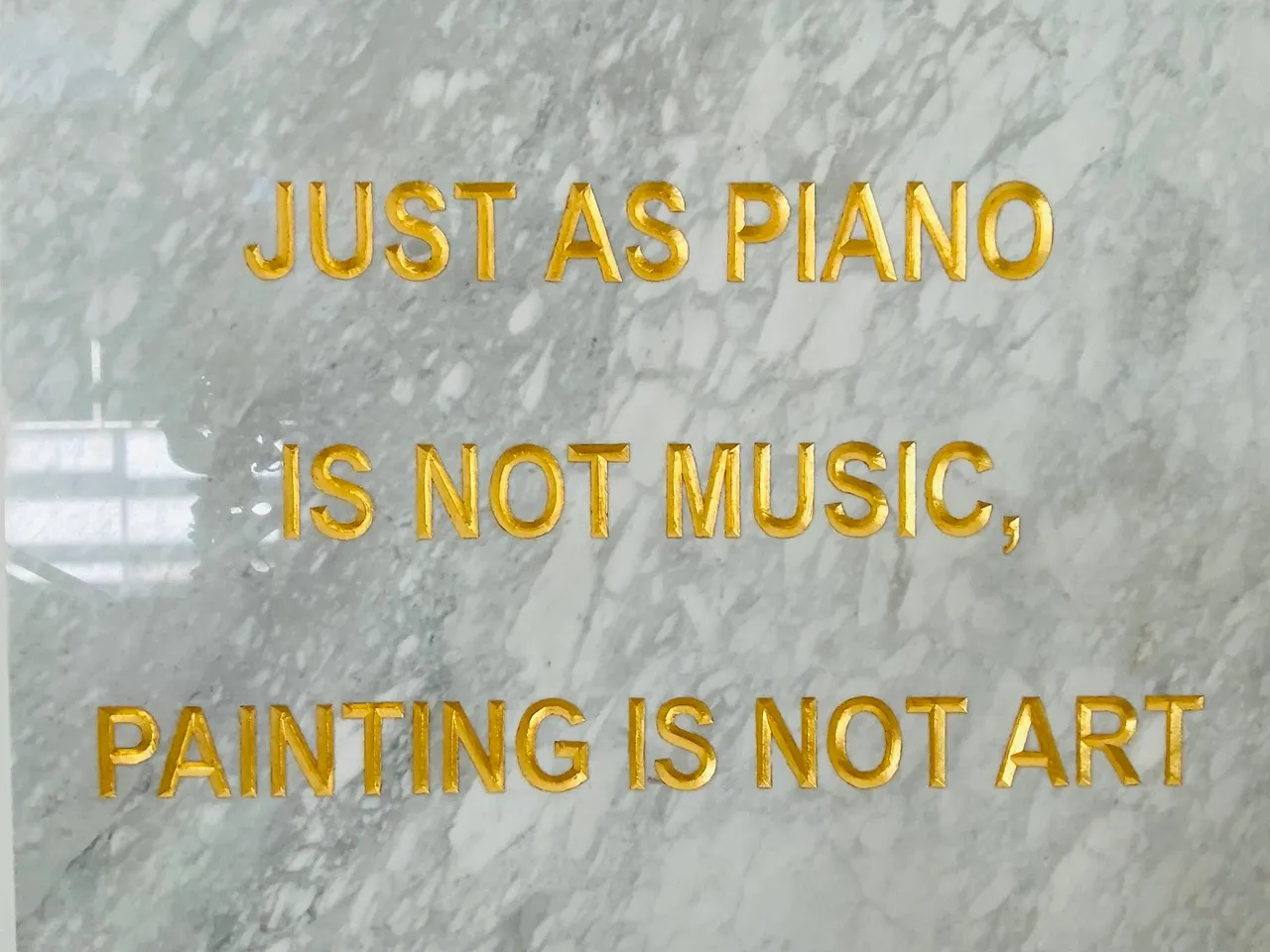

Braco Dimitrijevic's work, as well as his theoretical book Tractatus Post Historicus, (1976) were an important influence on two tendencies that dominate artistic discourse today: critical practices in public space and interventions in museum #collections.
Dimitrijević first conquered public space to exhibit his art and later moved into museums, where he used art as inspiration for his work:
Louvre is My Studio - Street is My Museum.
Coming across this messages has inspired my whole concept of the #dao for #museums. What I did not know yet, but just found out recently while researching for this article: Tractatus Post Historicus is a #deconstruction of institutionalized perception of art. It even refers to a #decentralized #museum. Ok, I haven't read it (just ordered it, it has not arrived yet), but this sounds like some good read for the conception of a #museumdao.
And with these thoughts in mind I am inviting you to enter the first floor and to look at a selection of Croatian #artists. I have to admit I am not an expert such as @foggymeadow who can tell you much more about the pieces and does so in her beautiful post on the Galerija Umjetnina .
I would just like to point out two pictures which among many others have caught my eye.

The first is by Ignjat Job and shows the village of Komiža on Vis island in the year 1934, not far from Split. There are two things so special about this painting. The first - its colours and second its liveliness. If you don't believe me, visit the site. You won't regret it.
Then there's the history of its painter - Ignjat Job was a local who spent his last ten years in Split and on the neighboring islands. He died rather young but in those last years he developed this characteristic style. The museum has several of his works which are equally impressive and beautiful.
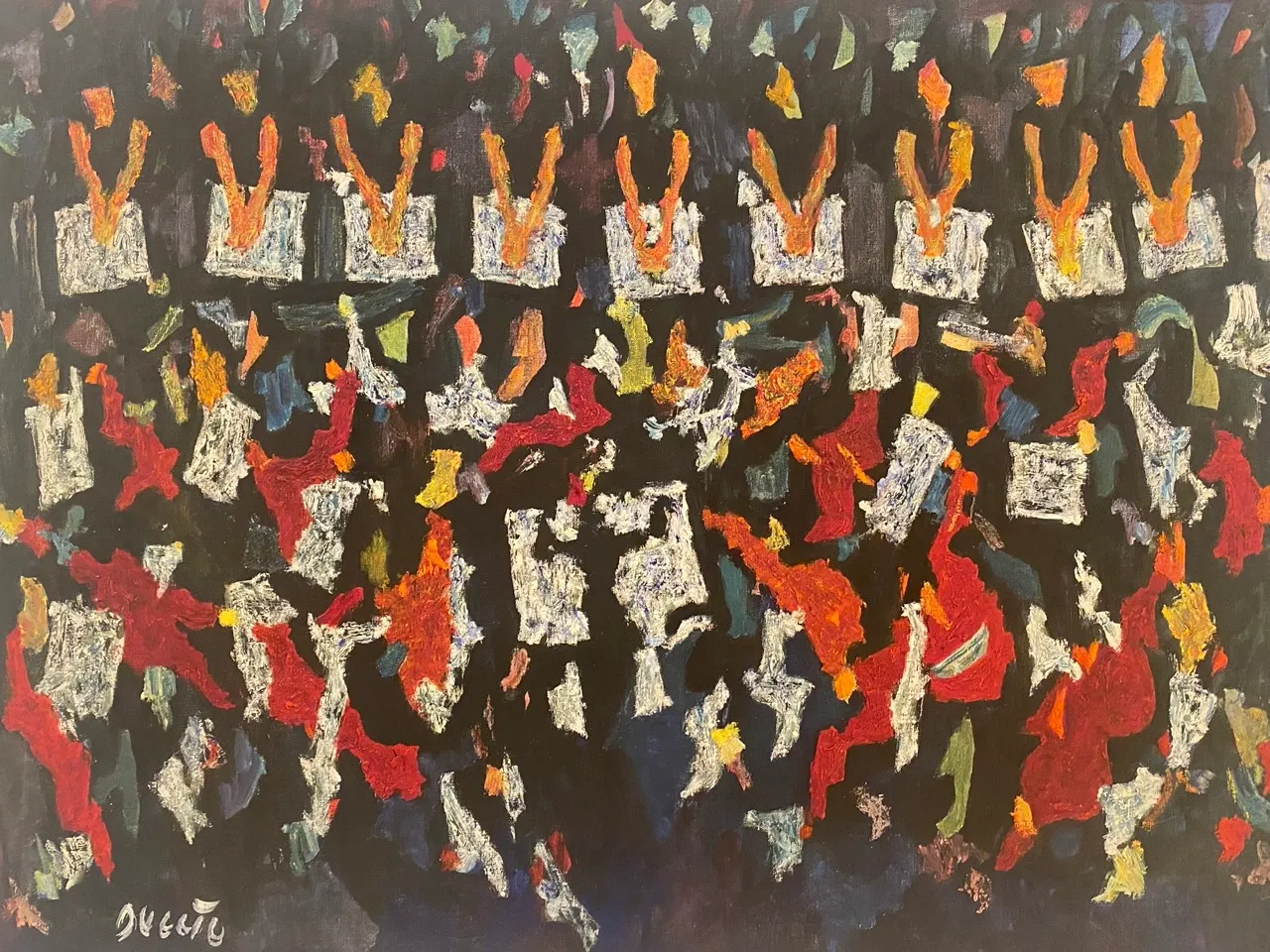
The second picture is titled Concert by #artist Ivo Dulćič and dates back to the year 1955. What I love about this painting is the contrast of order and chaos. Order features the audience while chaos is assigned to the artistic part, the orchestra. The patterns are still as the listeners and dynamic as the players. I can hear the music swell while watching the colors and trying to trace the movements of the orchestra.
 Ljubo Babic, Football Match, 1924
Ljubo Babic, Football Match, 1924
Let's become moderators in a #game of #art.
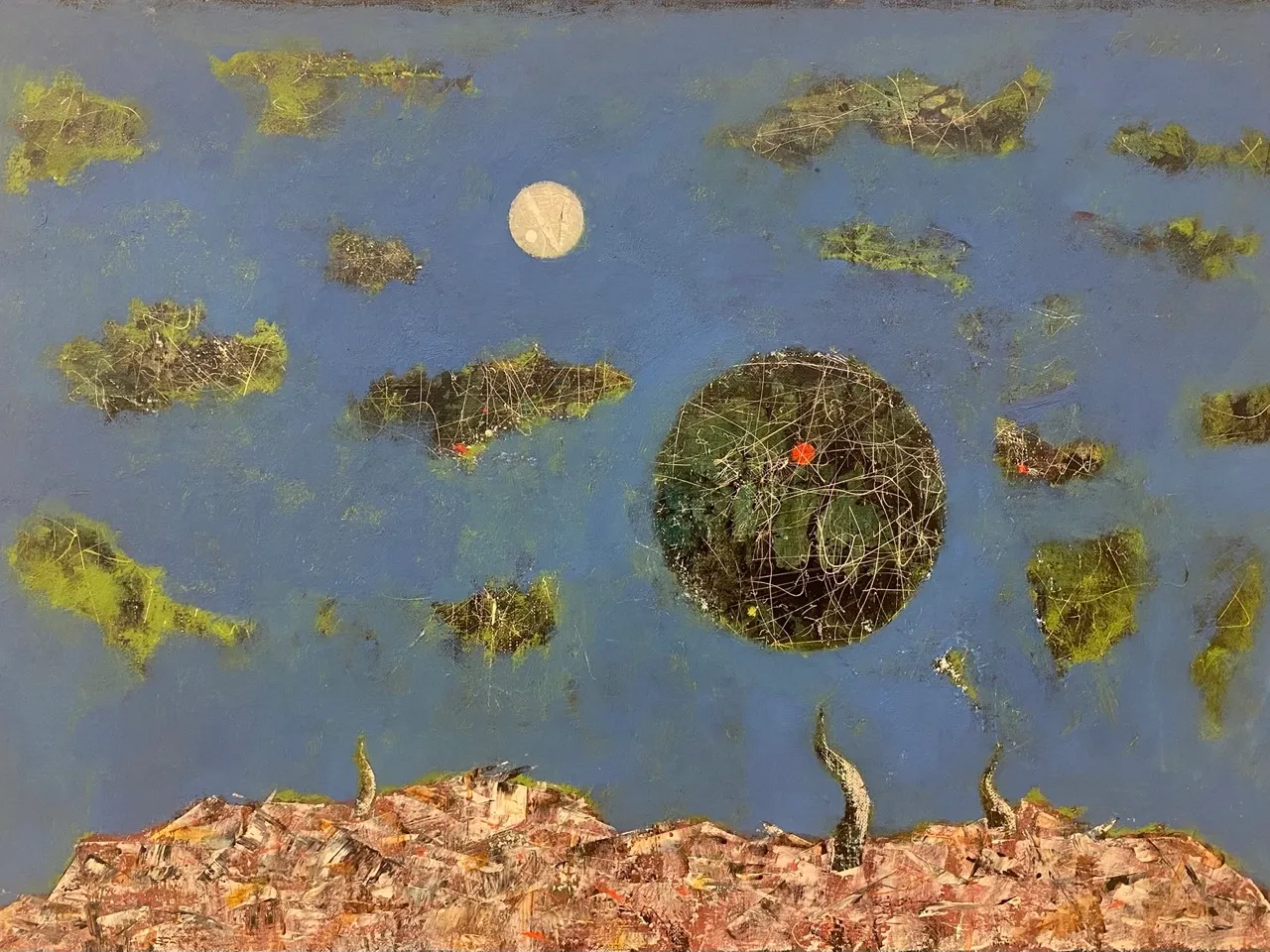 Boris Dogan, Between 11 and 12, 1959
Boris Dogan, Between 11 and 12, 1959
Let's explore. Let's begin.
